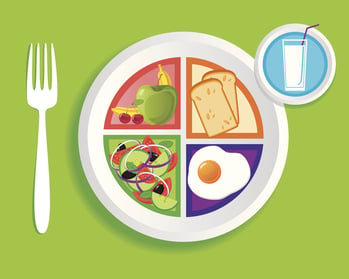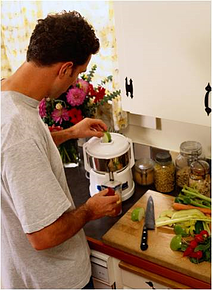 These days it seems there is one new health or weight-loss diet out every week. My clients are constantly saying to me:
These days it seems there is one new health or weight-loss diet out every week. My clients are constantly saying to me:
- “Is worth it?”
- “My friend lost a gazillion pounds on it, so it must work!”
- “I saw on TV how this diet cures diabetes.”
- “But Dr. Oz says…”
And before I knew better, I fell into the trap of these diets myself! Back then it was SlimFast and the Richard Simmons plans that were all the rage. Nowadays, we see the Fasting Diet plans, Paleo, Whole30, and Weight Watchers. And while I don’t think all of these plans are horrible or unsafe, I do believe that for the most part you should save your time and money if the diet does any of the following things.
Tells You to Follow Strict Meal Plans
Life is already complicated enough. Limiting food choices or following rigid meal plans can be an overwhelming, unrealistic feat. With any new diet, always ask yourself: "Can I eat this way for the rest of my life?" If the answer is no, the plan is not for you.
Promises Rapid Weight Loss
Slow, steady weight loss is more likely to last than dramatic weight changes. Healthy plans aim for a loss of no more than 1 to 2 pounds per week. If you lose weight quickly, you are 100% more likely to gain it back just as quickly.
Says to Consume Foods in Excess or Cut Them Out Completely
Ditch diets that allow unlimited quantities of any food, such as grapefruit and cabbage soup. It's boring to eat the same thing over and over and hard to stick with monotonous plans. Avoid any diet that eliminates or severely restricts entire food groups, such as carbohydrates. These aren’t necessary or realistic; you can lose weight without these nutrition extremes.
Requires Supplements Like Pills or Powders
Might as well take your money and just throw it in the trash. Not only are these supplements not necessary, they are not proven safe or effective. Ask a trusted professional and learn the consequences for yourself.
Conflicting claims, testimonials, and hype by so-called experts can confuse even the most informed consumers. The bottom line is this: If a fad diet or product sounds too good to be true, it is.


 Grocery shopping takes time, preparation, patience, and organization. But throw kids in the buggy (or cart) with you, and usually you end up with a big old, stressful mess. Take it from a mom with three kids under the age of 5; I know firsthand that it can be done happily and without tantrums (well, for the most part). But it’s taken some practice.
Grocery shopping takes time, preparation, patience, and organization. But throw kids in the buggy (or cart) with you, and usually you end up with a big old, stressful mess. Take it from a mom with three kids under the age of 5; I know firsthand that it can be done happily and without tantrums (well, for the most part). But it’s taken some practice. 
 We see it, we eat it. Usually that’s how it goes, right? Of course we eat too much, but is it really our faults? Well, unfortunately for Americans, the portion distortion mania has gotten out of hand—and so has obesity. Over time, we’ve gotten so used to the larger portions being served at restaurants, we’ve come to think this is normal. Then of course that thinking spills over into a food addiction at home, too. More food, more food, more food. The craziness needs to stop now! (Here are
We see it, we eat it. Usually that’s how it goes, right? Of course we eat too much, but is it really our faults? Well, unfortunately for Americans, the portion distortion mania has gotten out of hand—and so has obesity. Over time, we’ve gotten so used to the larger portions being served at restaurants, we’ve come to think this is normal. Then of course that thinking spills over into a food addiction at home, too. More food, more food, more food. The craziness needs to stop now! (Here are 
 Many people don’t know where to start when eating healthier. Here are eight tips to help you eating smarter. You don’t need to do them all, but by incorporating just a couple of changes each week, you will find yourself on a path to better health in no time!
Many people don’t know where to start when eating healthier. Here are eight tips to help you eating smarter. You don’t need to do them all, but by incorporating just a couple of changes each week, you will find yourself on a path to better health in no time!
 Juicing is the process of extracting juice from the flesh or the pulp of a fruit or vegetable. This technique has been used for hundreds of years as a way to maximize nutrient intake by drinking only the juice of various vegetables and fruits. I wanted to get the New Year off to a healthy start and reset my digestive system, so I researched how to complete a “safe” juice cleanse.
Juicing is the process of extracting juice from the flesh or the pulp of a fruit or vegetable. This technique has been used for hundreds of years as a way to maximize nutrient intake by drinking only the juice of various vegetables and fruits. I wanted to get the New Year off to a healthy start and reset my digestive system, so I researched how to complete a “safe” juice cleanse.